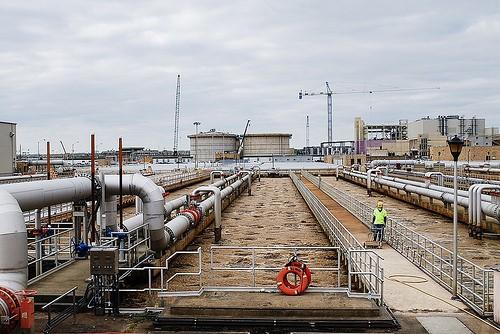 Upgrades and operational efficiencies at wastewater treatment plants (WWTPs) throughout the Chesapeake Bay watershed have resulted in steep reductions in nitrogen and phosphorus pollution and put the sector at the forefront of Bay restoration efforts. From 1985 through 2015, the wastewater sector cumulatively prevented over 900 million pounds of nutrient pollution (nitrogen and phosphorus) from entering the Bay’s tributaries - reducing nitrogen to the Bay by 57 percent and phosphorus by 75 percent. In 2015, for the first time, annual progress in this sector effectively met its 2025 nutrient pollution limits in the landmark Chesapeake Bay TMDL.
Upgrades and operational efficiencies at wastewater treatment plants (WWTPs) throughout the Chesapeake Bay watershed have resulted in steep reductions in nitrogen and phosphorus pollution and put the sector at the forefront of Bay restoration efforts. From 1985 through 2015, the wastewater sector cumulatively prevented over 900 million pounds of nutrient pollution (nitrogen and phosphorus) from entering the Bay’s tributaries - reducing nitrogen to the Bay by 57 percent and phosphorus by 75 percent. In 2015, for the first time, annual progress in this sector effectively met its 2025 nutrient pollution limits in the landmark Chesapeake Bay TMDL.
The Bay TMDL incorporates waste load allocations that account for reductions anticipated by Bay jurisdictions for WWTPs. The Bay jurisdictions include Delaware, Maryland, New York, Pennsylvania, Virginia, West Virginia and the District of Columbia.
You may need a PDF reader to view some of the files on this page. See EPA’s About PDF page to learn more.-
Chesapeake Bay Progress: Wastewater Pollution Reduction Leads the Way (PDF)(4 pp, 1 MB,
06-14-2016)
Factsheet on the success of the wastewater sector nutrient reductions in the Chesapeake Bay Watershed
